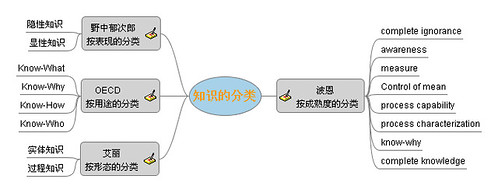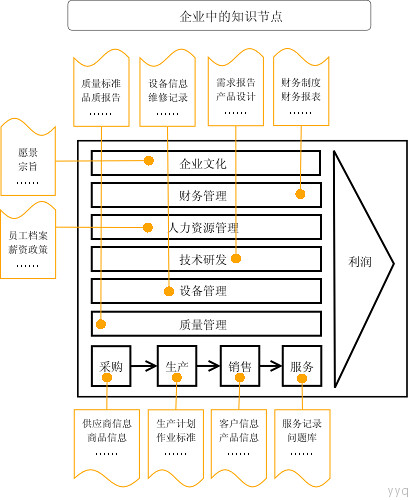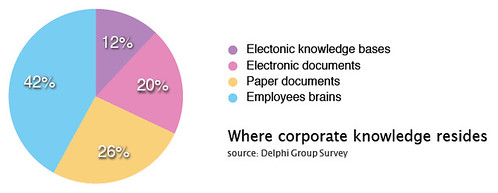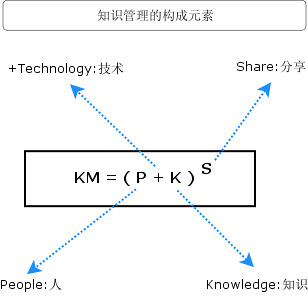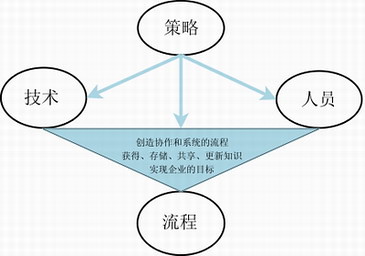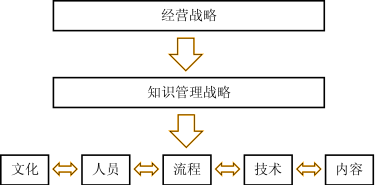If you look at how companies approach knowledge management, you can see that the problem is in the execution. Companies commonly make catastrophicmistakes by falling for one of these seven myths:
知识管理是关于知识的
KNOWLEDGE MANAGEMENT IS ABOUT KNOWLEDGE.
"Knowledge" is one of those words that sound great. Who isn't for more and better knowledge? It's almost patriotic. But the real question is: knowledge to what end? Companies that deploy knowledge-management systems hoping they will eventually stumble across a purpose for their knowledge-and there are many such companies-may be in for a long wait. The systems must start and end as all business initiatives should, with a focus on delivering top-line growth, improving operations, and increasing profit margins.
知识管理是关于技术的
KNOWLEDGE MANAGEMENT IS ABOUT THE TECHNOLOGY.
Many companies become so focused on building the knowledge-management system that deploying the technology is all they do. And they fail. One large firm I know built the Rolls Royce of knowledge platforms, a true technological tour de force. But everyone was so busy overengineering the system that they gave too little consideration to how it would operate, to what problem the system was supposed to address, and to how it would integrate with the overarching technology strategy. In the end, the system could not keep up with the rapidly changing business, there was little flexibility to adapt toindividual users, and every upgrade became a Herculean task.
系统应该是全能的 能治愈癌症解决全球饥荒
THE SYSTEM SHOULD BE SO ALL-ENCOMPASSING THAT IT CAN CURE CANCER AND END WORLD HUNGER.
In fact, if you set enormous expectations, you're almost guaranteed to fail to live up to them and may be dismissed as a failure. Instead, realize that you don't have to solve every information problem in your business on the first day. You should start small, so you can demonstrate successes and develop evangelists for your efforts. A telecom company I was involved with took the right approach. Pursuing a huge contract at a large banking customer, the telecom company leveraged knowledge-management tools to integrate the efforts of a global sales team. The team was never caught off guard through the long, arduous sales cycle and had the agility to win the deal. Based on the visibility of that success, and on the lessons learned during that initial foray into knowledge management, this telecom company has been able to extend the capability to all of its most significant sales activities. One caveat: You need to think big even as you start small. That's because you need to make sure that the knowledge-management architecture that you begin withwill still work as you expand to include other parts of your business.
知识管理的目标是建立一个文档库
THE GOAL IS TO CREATE A DOCUMENT REPOSITORY.
Certainly, document management can be a priority if employees often have trouble finding critical information or carry out redundant efforts to develop the same information. However, you must focus as much on the value and reliability of the information as on how the information is stored. The research department of a global firm I know found this out the hard way. It put all its white papers and research reports online but found that few people used them. Then the firm built a way for people to query each other-people no longer just looked up information but could find the scientists who generated the information and ask a precise question. Employees were delighted. They made better decisions, and in less time.
你能买到一个现成的系统
YOU CAN BUY A READY-MADE SYSTEM.
Wishful thinking. Knowledge management systems are as individualized as the businesses that use them. While there are plenty of good tools available commercially, the real issue is how those are all tied together companywide and how they are integrated into your growth, operations, and technology strategies. If your knowledge management program asks employees to use four search engines, three document-management systems, and six types of collaboration tools, on multiple types of computer systems, you're dead. Individual parts of your business might argue that they should be able to tackle knowledge management on their own, but you're almost always better off being consistent throughout your business.
知识管理就是控制知识
KNOWLEDGE MANAGEMENT IS ABOUT KNOWLEDGE CONTROL.
Companies worry excessively that people will put content in the wrong place or that they can't be trusted with so much information. They add layer upon layer of approvals for contributing information or accessing it-and sap the potential of their systems. One executive recently told me that his company had instituted an elaborate system for tracking the relationships it has with customers-then made sure that all its salesmen had access to very little of that information, for fear that they might defect to a competitor and take information with them. In the end, knowledge management isn't about maintaining a pristine database. It's about fostering an environment in which people can ask questions like, "Does anybody know...?" Or, "Who can help me...?" This means an open system that encourages building relationships through communities and creating opportunities for personal interaction, across cubiclesand across oceans.
做好之后 他们就会用的
IF YOU BUILD IT, THEY WILL USE IT.
When done right, knowledge management transforms an organization. That isn't an easy task. Before you deploy your system, you need to consider the concerns people will have about a new way of doing things. You have to consider the attributes of your culture that encourage knowledge sharing and those that encourage hoarding. Most importantly, you have to face up to the fact that senior executives must provide strong leadership.
Believing any one of these myths is fatal. Merely avoiding them will give companies a much better chance of getting the right information to the right people at the right time.
作者: Marc J. Rosenberg
